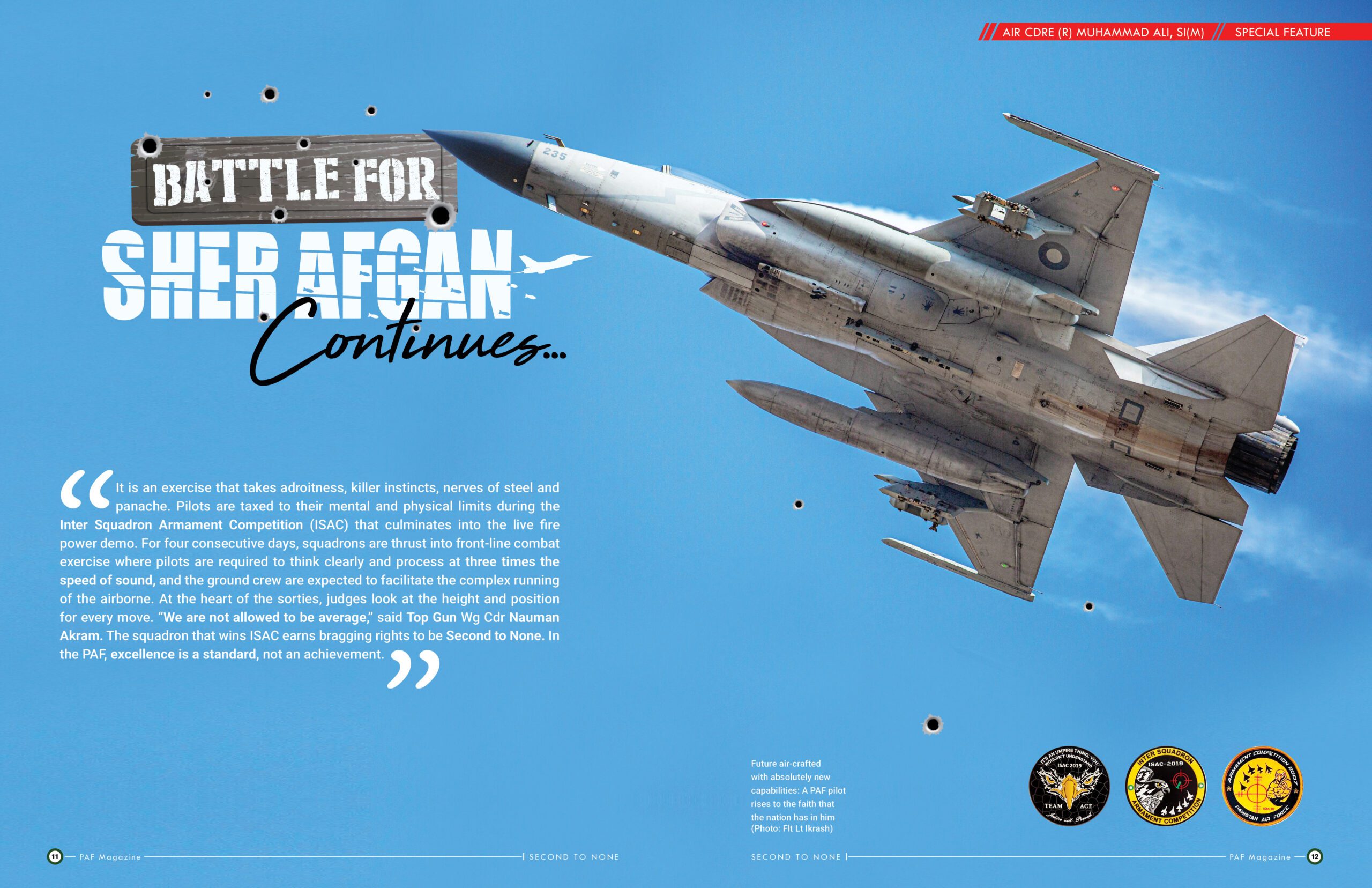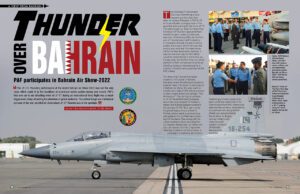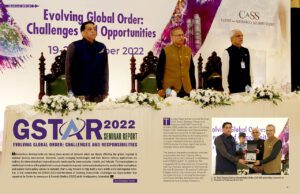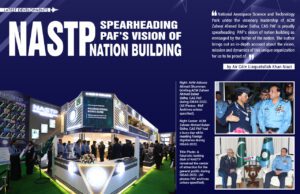It is an exercise that takes adroitness, killer instincts, nerves of steel and panache. Pilots are taxed to their mental and physical limits during the Inter Squadron Armament Competition (ISAC) that culminates into the live fire power demo. For four consecutive days, squadrons are thrust into front-line combat exercise where pilots are required to think clearly and process at three times the speed of sound, and the ground crew are expected to facilitate the complex running of the airborne. At the heart of the sorties, judges look at the height and position for every move. “We are not allowed to be average,” said Top Gun Wg Cdr Nauman Akram. The squadron that wins ISAC earns bragging rights to be Second to None. In the PAF, excellence is a standard, not an achievement.
Like a shark circling a wounded prey, Wg Cdr Nauman Akram comes out of a 3G turn as he makes his final course change and locks in on a straight path to the target. The squadron commander has rehearsed the next moves over and over again in his head. In a brilliant display of aerial dexterity, F-16’s Gatling machine gun dispatches a short burst at the ten-by-ten feet target on the ground; it’s a direct hit (DH). The 85 out of 100 rounds impact with deadly accuracy, and the pilot pulls up before breaking the hard deck. All in less than ten seconds.

Nauman Akram gets the highest number of DH. The top gun wins the Sher Afghan Trophy for superb marksmanship in the Inter Squadron Armament Competition (ISAC) 2019, one of the most realistic combat training exercises. He does the No 9 Sqn proud – the same Sqn that won the Perry-Keene trophy in the very first inter-squadron armament competition in 1949.
From its inception, Pakistan Air Force has had to contend with an enemy that enjoys a clear advantage in numbers even today – 4:1. In order to meet the challenge of numerical superiority, the PAF has striven to maintain a qualitative edge over its adversary. And to sustain it, the air staff has placed the greatest emphasis upon the quality of combat training inculcated into all elements of this fighting force.
In its earliest days, PAF discovered the immense importance of holding regular operational exercises. In 1960, the Fighter Leader’s School introduced the Sher Afgan trophy, for the individual fighter pilot who emerged as the best overall marksman during inter-squadron armament competitions.
Designed to hone and test the skills of its operational crews, inter-squadron armament competitions became a regular feature of the PAF. Nobody could explain this better than Air Marshal Aliuddin (Retd) two times top gun. He won the Sher Afghan trophy in 1967 and then again a year later, when he was just a Flying Officer and without the advantage of technology, glass cockpit, and computer displays that have replaced gauges.
Expectations were higher the second time in 1968. Aliuddin swept down on his target, punched out 120 rounds in little over a second from the six Browning machine guns of his F-86, admired his handiwork and pulled up. “It was a DH. All 120 bullets hit the target,” he said. In 1974-75, Aliuddin had almost won the top gun trophy for the third time. After the three rockets he fired on target, the fourth washed out. “I immediately shouted ‘twirler’. When fired, it took off for kingdom come,” he laughed illustrating what happened by breaking down the engagement.
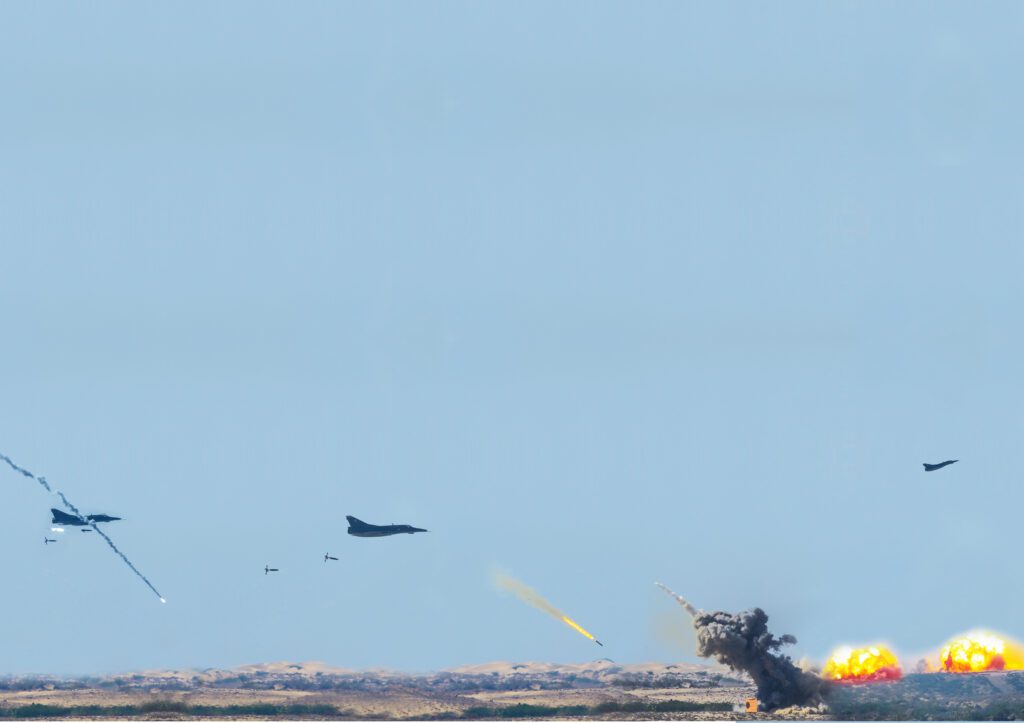
ISAC competitions were driving tests of our lives. “The focus was on keeping pilots sharp. Competitions required precision flying and experience, which came from training in conditions as real as possible. Inter-squadron armament competitions were the finest methods of inculcating Spirit-de-Corp,” Aliuddin said explaining why it used to be such a huge thing for the squadron that won.
It was a privilege for then Flying Officer Aliuddin that Air Marshal Nur Khan would prefer to fly with him. It was an honour when Shah of Iran, during his visit to the biggest fire power demonstration ever held in Pakistan, asked to meet the young pilot personally. There is no doubt that officers like FS Hussain, Sikander Masood, Jamal A Khan, MM Alam, Lucky Hayat, Arshad Chaudhry, Wiqar Azim and Aliuddin fought different kinds of wars, their bravery was a strain of bravery that still commands respect. But that is what the PAF wants, for the young pilots today to see what they did and then raise the bar.
Formation and presentations of the inter-squadron armament may be pre-set; the outcome is anything but certain. With different platforms, such as the JF17, F-7 and Mirage, the aircraft may not be equally matched, it is the pilot that makes the difference, at least that’s how many officers see it.

“In a simple comparison, plane vs plane, the F-16 comes out on top. In the end it is the quality and expertise of the pilot that matters most,” said Air Cdre Sajjad Noori, Commandant ACE.
During ISAC in 1960, victory clearly belonged to No 16 Sqn. Even if the four pilots from No 14 had placed seven bombs out of the eight through the target, No 16 Sqn would still win. “The only, but nearly impossible, danger was that they might come back with 100 percent bombing results, which would give them a very thin margin over No 16 Sqn, But that seemed improbable,” wrote Air Cdre Sajjad Haider in his book ‘Flight of the Falcon’. As the entire lot of pilots waited for the final results, Sajjad Haider vividly remembers Zaheer Massey (affectionately known as Jumbo), switch-off his aircraft and shouting from the cockpit, “All eight bombs in, we got 100 percent hits.”
“I could have slaughtered Jumbo with my bare hands that day, for taking away our victory. The silver lining was that our Squadron Commander, top gun Sqn Ldr Sadruddin had won the Sher Afghan trophy,” he writes.
Last year, like in the past, the four-day ISAC 2019, was announced roughly two months prior to the competition. All fighter Sqns of PAF arrived at Masroor Air Force Base in Karachi. Four handpicked pilots in each squadron got a shot at joining the exclusive club of top guns.
Pilots flew the jets on stem power, brain stem – flying F-16s, Mirage, JF-17 and F-7Ps the same way they breathed or walked, without having to think about it – doing science inverted, 500 knots, pulling Gs. Teamwork was key. Pilots flew a tightrope between stalking and over shooting their ground targets, balancing off with stick and delicate taps of the rudder at 900 kph. While executing fighter maneuvers, pilots communicated with each other and ground controllers using phrases few civilians have ever heard; such as bank and open power, secret codes for certain offensive flying, tactical calls. As pilots delivered payload on target, thousands of pounds of heavy thrust shriek in angry protest against the pull of the desert floor.
Until the last day, only the “Griffins” could have beaten the “Griffins” But the “Arrows” in the No 11 Sqn who won ISAC eventually, had visualized lifting the trophy for years.
Lessons learnt in ISAC are too valuable to be left in debriefing rooms. Back at their home bases, pilots swap their interesting stories with a mix of adrenaline and relief, reenacting their successes and failures.
“ISAC challenges PAF pilots with first hand experiences – hitting target in close and long range ground attacks. It’s like being thrown into the deep. We study the capabilities of the aircraft, check if the weapon systems perform as designed and validate our tactics,” said Wg Cdr Nauman Akram.
Their exchanges may be part bravado but there is no mistaking those clear looks in their eyes of self-awareness and gravitas.

